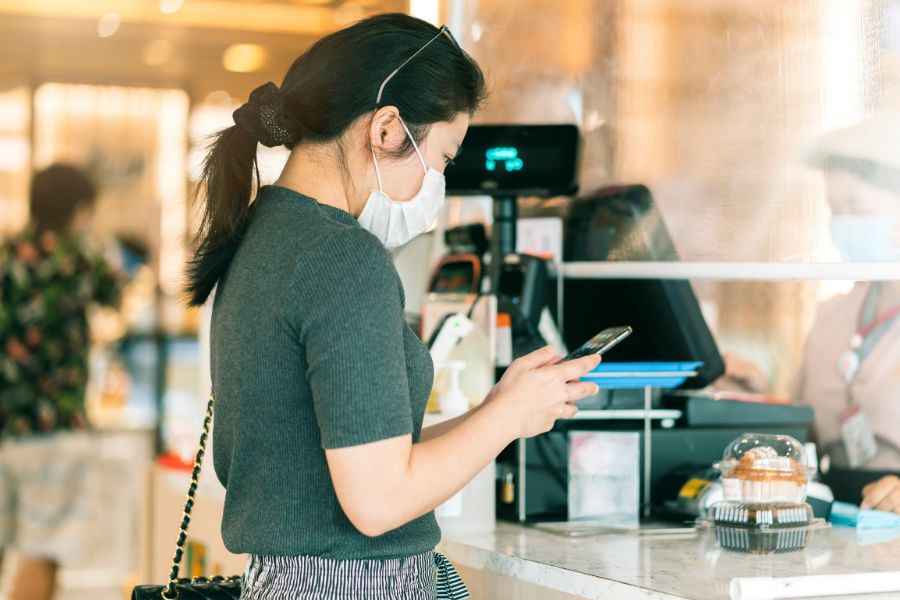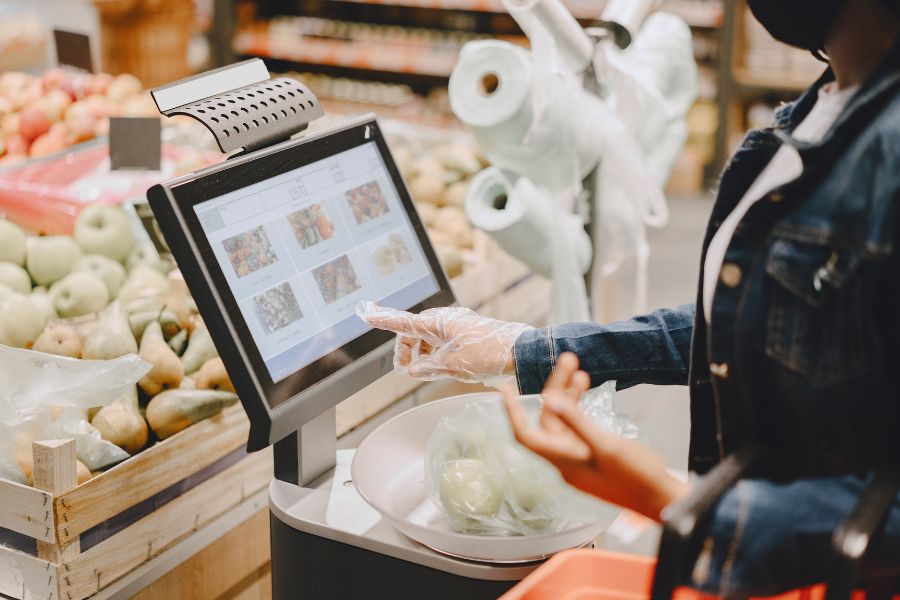Running a successful retail business in Thailand now requires connecting your online store with your physical shop operations. Integrating Point of Sale (POS) systems with ecommerce platforms helps Thai businesses stay competitive and meet customer expectations. Many Thai retailers struggle when trying to connect these two worlds. The process can be challenging, but when done correctly, it creates a unified business system that saves time and improves customer satisfaction. This guide walks you through practical steps for the POS ecommerce integration Thailand. The goal is to help you build a retail system where information flows easily between your physical and digital sales channels.
How Ecommerce POS Integration Works
Ecommerce POS integration creates a direct connection between your Point of Sale system and online store platform. This connection allows data to flow between both systems in real time, helping businesses manage orders and transactions across online and physical sales channels.
When you connect these systems, your company can track inventory accurately by syncing stock information from both physical and online stores. When a customer buys a product on your website, the POS system immediately updates the inventory count, showing the correct stock levels in physical locations.
The POS system automates data sharing between online and offline stores. It keeps product catalogs in sync between your website and physical stores, maintaining a single source of truth for product information. The system automatically updates inventory across all sales channels, creating real-time stock management that stays consistent everywhere you sell.
This integration transfers data smoothly between platforms. It provides a central system for processing transactions across all channels through connected payment gateways.
Benefits of An Ecommerce POS Integration for Thai Businesses
The POS ecommerce integration Thailand offers numerous benefits that can transform how Thai businesses operate and interact with customers.
Promote Omni-Channel Selling
The numbers tell a clear story: businesses with strong omni-channel presence keep 89% of their customers, while companies with weak omnichannel engagement retain just 33%. Most POS systems connect your data across many sales channels:
- Online stores
- Marketplaces (Amazon, eBay)
- Social media (Facebook, Instagram)
This connection gives you a complete view of customer journeys, maps all customer interactions with your brand, and creates many ways to reconnect with customers.
Eliminate Manual Data Input
Typing data by hand might seem simple, but it becomes very tiring when dealing with thousands of products. When you connect your website and POS, important information moves automatically between systems. This saves a lot of time!
Enhance Real-Time Inventory
Selling products you don’t have causes many problems – you must refund money, use accounting resources, take up customer service time, and create unhappy customers. Modern POS systems that work with online stores update inventory automatically. All systems stay connected through API connections, sending inventory updates from the POS to all other sales channels. This prevents operational problems and keeps customers happy by avoiding out-of-stock situations.
Conduct Consistent Cross-Channel Promotions
Managing sales and promotions can be chaotic. When you decide to promote certain products, applying these deals across all your sales channels and physical stores takes a lot of work. A connected POS lets you set up promotions everywhere at once by changing a few settings. Your customers will see the same deals online and in stores, which builds trust in your business.
Leverage Data-Driven Business Growth
Connecting all channels to one central system helps you gather valuable information about new and existing customers. This data helps you improve your business, create personal experiences, and target the right customers. You can show customers exactly what they want based on style, color, size, and texture preferences.
Methods of Integrating POS with An Ecommerce Platform
You can connect your ecommerce platform with a POS system in several different ways. To find the right POS ecommerce integration Thailand method for your business, you should look at your current setup and needs based on the situations described below.
With a POS But No Website
If you already have a POS system but no online store, check whether your provider supports integration with ecommerce platforms. Many POS systems come with built-in connectors or open API access, so they can link with platforms like Shopify, WooCommerce, or Magento. If your current system lacks these options, you may need a custom-built ecommerce solution.
When setting up your integration, focus on:
- Select a Theme – Some ecommerce systems allow you to design your own theme, while others provide ready-made themes you can adjust to match your brand style.
- Connect Payment Gateway – Set up payment providers to work with both your POS system and website. Keep in mind that online sales often have higher processing fees than in-store card transactions.
- Move Your Data – Transfer inventory and customer loyalty points from your POS to your website using a data migration tool for faster, more accurate results.
- Set Up Shipping – Verify that your ecommerce platform supports your preferred shipping carriers and can calculate delivery costs correctly.
With a Website But No POS
You need a POS integration to expand your business from online to brick-and-mortar. First, determine how to connect your ecommerce platform with a POS system. Next, find a POS system that works with your chosen platform. Then review these key details:
- Payment Processor Integration – Pick a POS that works with your existing payment providers. Changing payment providers should be avoided.
- Useful Add-ons – Select a POS system with extra capabilities like better reporting and inventory management.
- Curbside Pickup – Many customers want contactless payment options for safety. Choose a POS system that includes this function.
The right POS system should match your specific business needs and integrate smoothly with your current online store. This integration will help you manage both online and in-store sales through a single system.
Starting a Business Without POS or Website
If you’re just beginning your business, research providers that offer complete solutions combining POS systems and ecommerce websites. This helps link your online and in-store sales channels.
Find a technical partner for the long term. Look for a POS system that works with a good ecommerce platform. The right partner won’t push unnecessary features on you and will give helpful advice at fair prices.
How to Achieve Smooth POS Ecommerce Integration Thailand
This integration process helps Thai businesses connect their online and physical stores, creating a unified selling system that works across all channels.
Select a POS system
The first step is selecting a POS system that works well with your ecommerce platform. Based on your business needs and platform, find a suitable POS solution. Systems like Shopify POS, Square POS, and Lightspeed connect well with many ecommerce platforms.
Set up API integration
You’ll need to set up API integration to allow your POS and ecommerce systems to sync data in real time. Start by installing an integration app, such as one offered by ConnectPOS. Then configure the API so your platforms can communicate with each other.
Synchronize product and inventory data
A key step is syncing product data between your POS system and ecommerce website. Keep product descriptions, prices, and inventory levels updated across all platforms to prevent discrepancies and avoid selling items that are out of stock.
Implement real-time sales and inventory tracking
After API setup, your POS system should track sales and inventory data in real time. This means when an item sells online or in-store, the inventory updates automatically on both platforms.
Test and monitor the integration
Before launching, run several test transactions to check system performance. Verify that inventory updates quickly, sales data syncs correctly, and customer transactions process without problems.
ConnectPOS SEA: Unifying POS ecommerce integration Thailand
ConnectPOS SEA helps improve operations and create better customer experiences. It serves as a cloud-based solution that replaces older systems with modern cloud POS for better digital integration. The system focuses on improved operations through a forward-looking POS that offers mobility and simplified processes. It also builds customer loyalty through consistent experiences that increase customer engagement and value.
For in-store customer experience, ConnectPOS provides assisted selling, complete product access, and remote selling options. The system includes self-service options that are compatible across different devices, with simple barcode/QR scanning and secure digital receipts.
ConnectPOS excels at online-to-offline integration through direct connection with ecommerce platforms, inventory and sales tracking across locations, and support for various payment options. The central management capabilities include live performance data, historical data analysis, and central store management.
This system brings together your online and physical store operations while making the shopping experience better for customers.
Wrapping Up
Integrating your POS system with your ecommerce platform creates a strong foundation for business growth in Thailand’s retail market. This POS ecommerce integration Thailand helps you track inventory accurately, process sales quickly, and provide better shopping experiences across all channels.
Ready to connect your POS and ecommerce systems? Contact ConnectPOS SEA today for the best POS ecommerce solution in Thailand. Our team understands local business requirements and can help set up a system that works for your specific needs.
FAQs: POS Ecommerce Integration Thailand
1. What difficulties might arise when linking a POS system with an ecommerce platform in Thailand?
Some systems may not sync properly, leading to inventory mismatches or delayed order updates. Other challenges include setting up local payment methods, managing multi-location stock, and ensuring smooth data flow between online and physical stores.
2. Is a cloud-based POS system a good choice for managing both online and offline sales in Thailand?
Yes, a cloud-based POS system keeps inventory, sales, and customer data updated in real time, helping businesses maintain accurate records across all sales channels. Many cloud-based options, including ConnectPOS, work directly with ecommerce platforms to simplify operations.
3. How can I keep my POS and ecommerce integration running without issues?
Check that inventory and sales data sync correctly, run test transactions regularly, and keep software updated to avoid compatibility problems. Choosing a POS provider with strong customer support also helps resolve any issues quickly.





